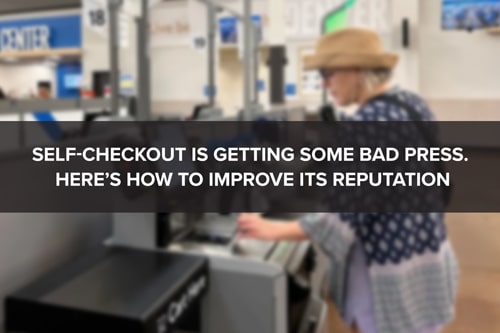
Table of Contents
ToggleImproving Self Checkout at Grocery Stores
Nice article by payment processor Datacap on How To Improve Self Checkouts Reputation. Check with Mike Lebo at Datacap or send email to [email protected] for more information.
Self-checkout solutions have been around for decades. However, advancements in technology, changes in consumer behavior, rising costs, and labor shortages have all led to more adoption in recent years. A 2022 study found that self-checkout is the dominant form of checkout for grocery stores, accounting for 55 percent of transactions.
Lately, though, retailers have announced they’re starting to pull back. Those headlines reveal that despite self-checkout’s potential, chains like Costco, Wegmans, and Walmart are moving away from these solutions due to challenges that impact both the customer experience and the bottom line.
Self-Checkout Challenges
Another issue is reliability. Machines with clunky user interfaces make it difficult for consumers to accurately identify products, particularly produce or bulk foods, weigh them when necessary, and scan efficiently. Additionally, medication or alcohol purchases that require age verification can significantly slow down the checkout process as consumers wait for employee assistance.
Furthermore, studies are finding that companies with self-checkout solutions have a shrinkage rate of 4 percent– more than double the industry average. Another survey found that 15 percent of self-checkout users admitted to stealing, and 44 percent planned to do it again.
Lately, though, retailers have announced they’re starting to pull back. Those headlines reveal that despite self-checkout’s potential, chains like Costco, Wegmans, and Walmart are moving away from these solutions due to challenges that impact both the customer experience and the bottom line.
Are Self-checkouts Worth Saving?
Another reason not to give up on self-checkout is that labor shortages continue, with retail struggling with a large number of job openings since 2020. Merchants need to find ways to operate with less staff. They also need to adapt to rising labor costs, especially in states that have enacted laws to boost baseline pay over the federal minimum wage rates.
Self-checkout, if done right, delivers a viable solution that meets customers’ expectations for autonomy and a fast, efficient experience and that eases retailers’ staffing and labor cost issues.
How to Improve Self-Checkout Experiences
- Understand the Customer Journey
The optimal self-checkout experience starts by understanding the customer journey at your client’s business. It isn’t the same for a big box store as it is for a grocery store. Merchants need help tailoring the experience to their specific vertical and customer base. These factors will help determine the right solution. For example, the number and size of items consumers scan will impact whether barcode readers should be embedded, handheld, or both. In some situations, RFID readers will enhance shopper experiences. Focus on removing barriers, like difficult lookups, for items that shoppers must weigh. - Prototype
If a self-checkout solution isn’t user-friendly and intuitive, even consumers who prefer them won’t use them. Furthermore, your clients may turn to your competitor for a better solution. Testing a self-checkout design with a merchant’s customer base is key to implementing a winning solution. Also, ensure merchants can easily integrate self-checkout solutions into their IT environments and manage them centrally.
- UX Design and Accessibility
Because self-checkout users are consumers and not store employees, solutions providers need to take a different approach to UX. Solutions must be designed so anyone, without training, can use them easily. That includes shoppers with disabilities, such as mobility challenges and vision impairments. The Americans with Disabilities Act (ADA) and 21st Century Communications and Video Accessibility Act (CVAA) offer guidance on ensuring accessibility. Consider touchscreen size, height, text-to-speech, and other assistive technologies when designing your self-checkout solution. - Design with Security
While shrinkage is a real challenge for retailers when it comes to self-checkout solutions, remember that the right technology can mitigate risk. Solutions with intelligent image recognition can identify an item without even having to scan it. This helps address shoppers who may have forgotten to scan an item, or with an intention to commit fraud or theft. Additionally, AI-enabled fraud detection software can compare transaction data with historical records (like real-time inventory numbers) and flag potential instances of theft, scanning errors, or fraud. - Put Humans in the Loop
While self-checkouts’ aim to help address labor shortages, they shouldn’t replace employees. Instead, they should allow them to be more productive and assist more customers. Make it easy for employees to be available to intervene when a customer is encountering a barrier to their self-checkout experience. Also, provide easy ways for both customers and employees to continue to provide feedback regarding their self-checkout experience, and work with your retailers to continue to optimize the solution over time.
Optimize Unattended Payments
- Processor-agnostic to give merchants options and agility
- Secure, meeting all PCI standards for payment security
- A true omnichannel solution where all payment data can be managed from a single platform
Create a Brighter Future
To learn more about the unattended payment solution you need for the next-gen self-checkout solution you’re bringing to market, contact us.



